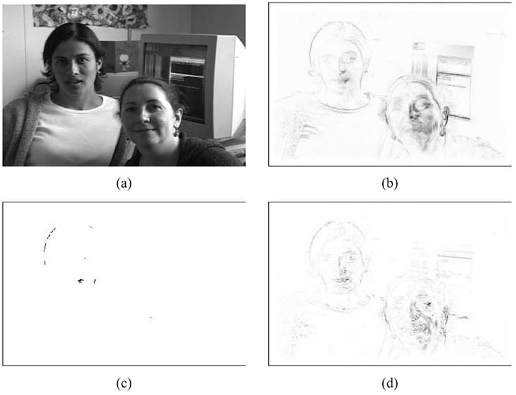




Did you find this useful? Give us your feedback











706 citations
252 citations
...In [11], [12], a deterministic approximation is developed by replacing (1) with the squared integral difference between f(~) and a uniform density....
[...]
[...]
198 citations
...It affects methods based on MI as well [13]....
[...]
...Audio-visual association can also be performed by optimizing the mutual information (MI) of modal representations [13], while trading off (2)-based regularization terms....
[...]
188 citations
...In [10], the speaker association problem is addressed via an information theoretic method, which aims to maximize the mutual information between the projections of audiovisual measurements so as to detect the parts of video, that are highly correlated with the speech signal....
[...]
181 citations
45,034 citations
10,114 citations
...Nonparametric density estimators, such as the Parzen kernel density estimator [15], are useful for capturing complex statistical dependencies between random variables....
[...]
...where is the support of one feature output, is the support of the other, is the uniform density over that support, and is a Parzen density [15] estimated over the projected...
[...]
1,489 citations
...We first show how audiovisual association problem can be formulated as a hypothesis test and giving a relationship to mutual information based association methods (see [11] for an extensive treatment)....
[...]
741 citations
...This term is more easily computed in the frequency domain (see [19]) and is equivalent to prewhitening the images using the inverse of the average power spectrum....
[...]
...[19] for designing optimized correlators the difference being that in their case the projection output was designed explicitly while in our case it is derived from the MI...
[...]
Computing can be decomposed into three stages:1) Prewhiten the images once (using the average spectrum of the images) followed by iterations of 2) Updating the feature values ( ’s) using (14), and 3) Solving for the projection coefficients using least squaresand the penalty.
Nonparametric statistical density models can be used to represent complex joint densities of projected signals, and to successfully estimate mutual information.
Using principles from information theory and nonparametric statistics the authors show how an approach for learning maximally informative joint subspaces can find cross-modal correspondences.
The adaptation criterion, which the authors maximize in practice, is then a combination of the approximation to MI (11) and the regularization terms:(17)where the last term derives from the output energy constraint and is average autocorrelation function (taken over all images in the sequence).
Mutual information for continuous random variables can be expressed in several ways as a combination of differential entropy terms [14](10)Mutual information indicates the amount of information that one random variable conveys on average about another.